Living Sculptures Delight at the Montreal Botanical Garden
If you wander through the Montreal Botanical Garden this summer, you'll find furrow-browed gorillas peering from the shrubs, a row of ring-tailed lemurs walking down the road and massive red cranes towering over you.
It's not an invasion from the zoo — it's mosaiculture, a type of horticultural art as wild as it sounds. Mosaiculture designers install carefully selected and pruned plants onto two- and three-dimensional designs, creating massive and surprisingly realistic living sculptures. In this exhibit visitors walk along a 2-kilometer (1¼-mile) path to see the work of 50 participants from more than 20 countries. Each designer worked with a set plant catalog to sculpt something from his or her country's culture.
Info: Mosaïcultures Internationales Montréal 2013: Land of Hope, Montreal Botanical Garden; June 22 to September 29, 2013; open every day from 9 a.m. to 7 p.m; $10 to $28

The Man Who Planted Trees
Mosaïcultures Internationales de Montréal
This mosaiculture pays tribute to a shepherd in a fable who planted trees on a desolate piece of land, turning it into fields and forests.
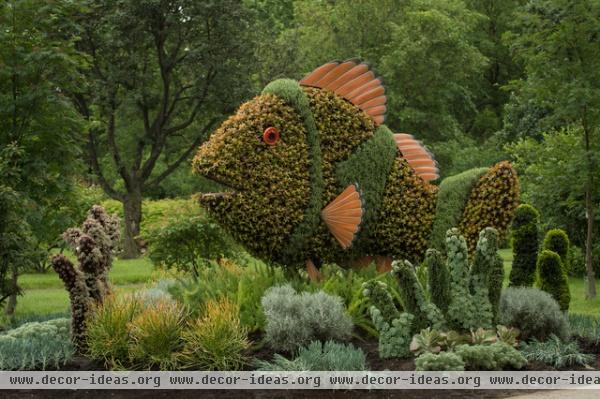
Small Clownfish and Anemone
Okinawa, Japan
A clownfish and anemone mosaiculture from Okinawa symbolizes humankind's symbiotic relationship with nature.
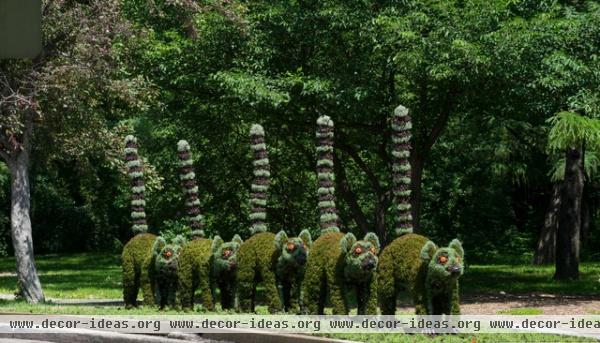
All in a Row
Madagascar
Madagascar's mosaiculture shows off one of the island's native, iconic and threatened animals: the ring-tailed lemur.
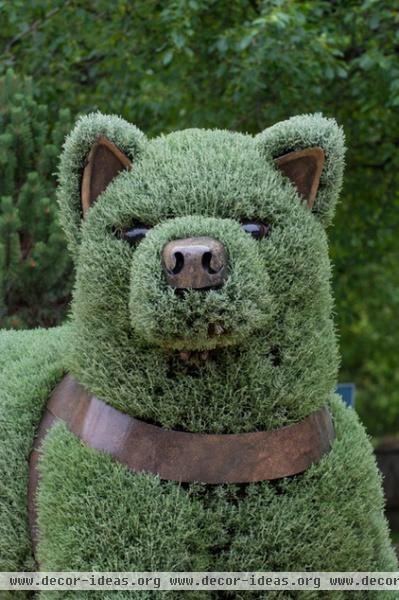
Hachiko, the Loyal Dog
Tokyo
Tokyo's sculpture of Selaginella kraussiana and welded metal honors the famous Akita named Hachiko, who waited loyally for his master at the train station for 10 years.
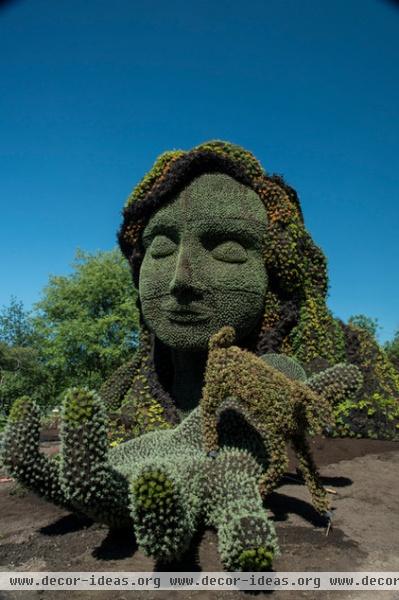
Mother Earth
Mosaïcultures Internationales de Montréal
Mother Earth is, of course, responsible for the entire show. This massive mosaiculture has planted mountains for hair and a deer hopping across the figure's outstretched hand.
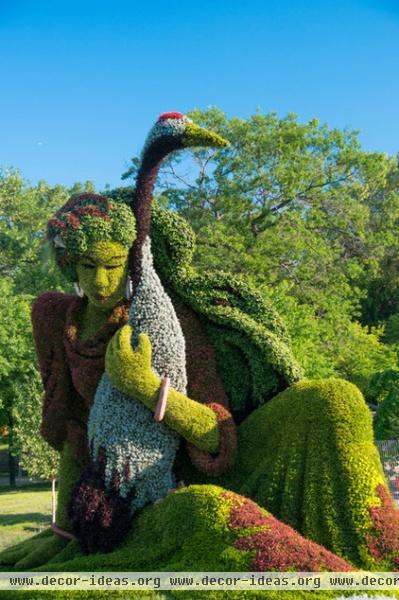
A True Story
Shanghai
Shanghai's tribute to Xu Xiu Juan — who devoted her life to the red crown crane — towers over visitors.

Hands Up!
Borneo
Borneo's lifelike orangutan of carex grasses hangs from a tree in the park.

Sunbath
Thailand
All of the world's 4,000 wild buffalo live in Southeast Asia, including Thailand. The country honored this wild beast with this sculpture.

Practically Family
Republic of Guinea
Giant chimps peer out from banana plants in the Republic of Guinea's mosaiculture.

Fragile Frogs
Atlanta
A silvery gray underbelly calls attention to this frog, designed by the Atlanta Botanical Garden in honor of its gopher frog restoration program.
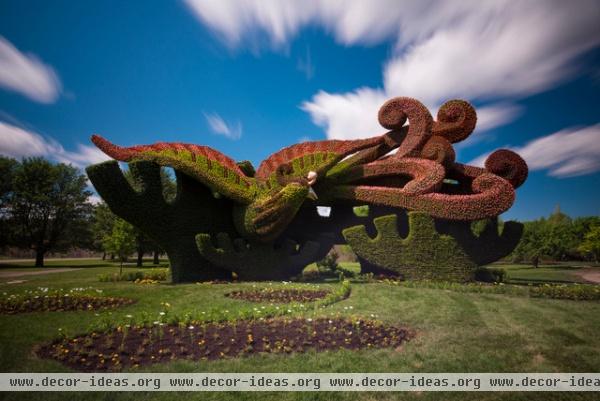
Planting Plane Trees to Attract the Phoenix
Beijing
Miniature flowering begonia plants add flashes of red to the phoenix's plumage in Beijing's mosaiculture, inspired by an ancient Chinese legend.

Gorillas at Risk
Uganda
Uganda's impressive gorilla mosaicultures call attention to the nation's Virunga mountain gorilla population — the only mountain gorilla population in the world.
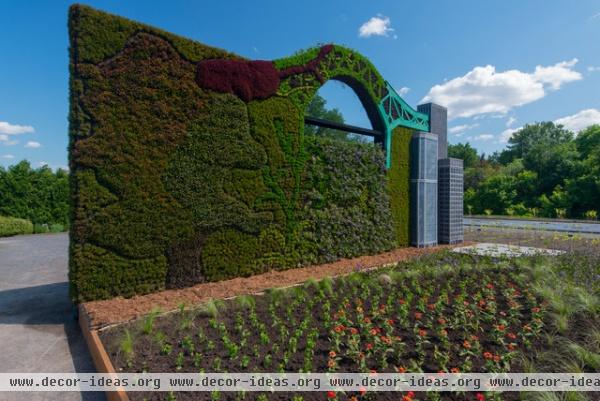
The Bridge
Trois-Rivières, Quebec
Want to make your own mosaiculture? The scale and maintenance needs of mosaicultures like these aren't usually suitable for residences. Installations like this require need strong plants, a consistent way to water them and a sturdy base structure.
But techniques from living walls can be applied to mosaiculture-style designs for a similar look at home. Bill Thompson, garden designer and living wall expert, suggests starting with a high-quality potting soil, a strong planting module and a drip-through irrigation method.
Thompson's living wall art tips: Cactus potting mix works for nearly every application. Its sandy texture compacts nicely and drains well. Succulents work well due to their compact growing habits, shade and sun adaptability, and variety of colors and textures. Small ferns, ivies and other plants with compact foliage are well suited for shady setups.Select plants in 2- to 4-inch pots. Once planted, they'll spread and fill in your design.Get a little crazy with your design. "Have fun with it," says Thompson. "It's like painting with plants." If you've chosen your plants properly and have the right irrigation, a living wall won't require much maintenance (unlike an actual mosaiculture, which requires constant pruning and watering). Choose plants that will get enough light or shade where you will put them, and prune periodically to keep your design tidy. You can even remove and replace the plants if they get too big.More: Find vertical garden structures in the Products section.












